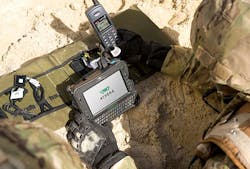Officials of the U.S. Air Force Research Laboratory at Wright-Patterson Air Force Base, Ohio, are working with the three companies as part of the Source Multiple Integrated Radio Frequency (SMIRF) research and development program.
Companies selected for the SMIRF program are:
-- MacAulay-Brown Inc. in Dayton, Ohio;
-- the Northrop Grumman Corp. Electronic Systems segment in Baltimore; and
-- Georgia Tech Research Institute in Atlanta.
Each of the SMIRF contractors will receive $500,000 up-front, and then will share the $22.5 million remaining from the original $24 million contract based on task orders assigned to each organization.
The goal of the Air Force SMIRF program is to conduct research and development of passive and active RF systems. Active RF systems transmit and receive radio waves, while passive systems simply receive radio waves.
Related: Systems & Technology Research joins Leidos in IARPA HF SIGINT signal-processing project
Air Force researchers are focusing the SMIRF program on targeting fire control solutions; simultaneous transmit and receive RF concepts; RF sensor resource management; geolocation algorithm development; simulation; test and evaluation; and integrated sensor systems.
Ultimately, researchers would like to apply the technologies and concepts developed in the SMIRF program to signals intelligence (SIGINT); measurement and signature intelligence (MASINT); geospatial intelligence (GEOINT); electronic warfare (EW); global positioning system (GPS); command, control, communications, computers intelligence, surveillance, and reconnaissance (C4ISR); and joint/special operations.
The three SMIRF contractors are likely to conduct engineering trade studies, and develop concepts or prototypes of structural, aerodynamic, electrical, and physical architectures, Air Force researchers say.
Potential applications of SMIRF technologies may integrating developmental hardware and software on manned aircraft unmanned aerial vehicles (UAVs) researchers say.
For more information contact the Air Force Research Laboratory online at www.wpafb.af.mil/AFRL.



